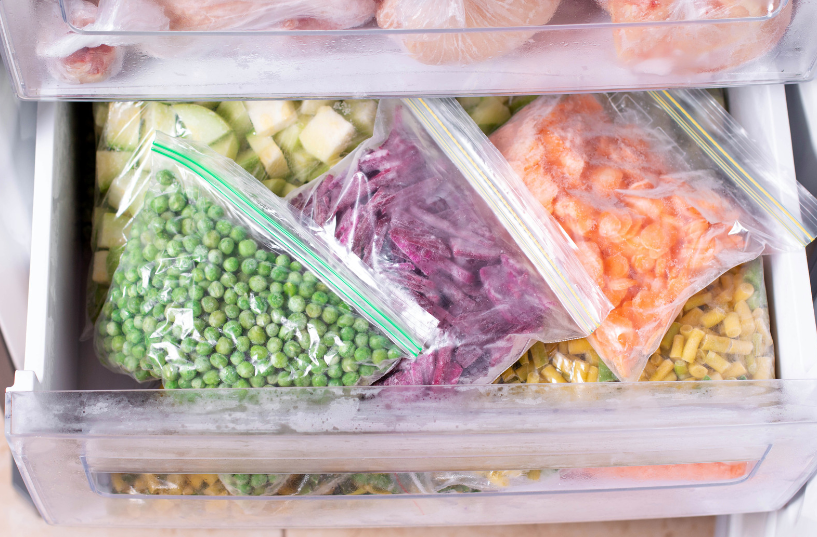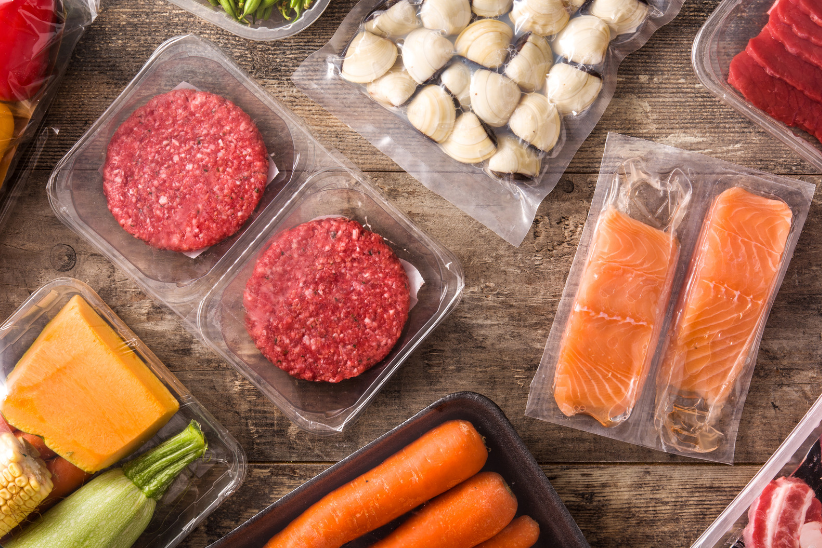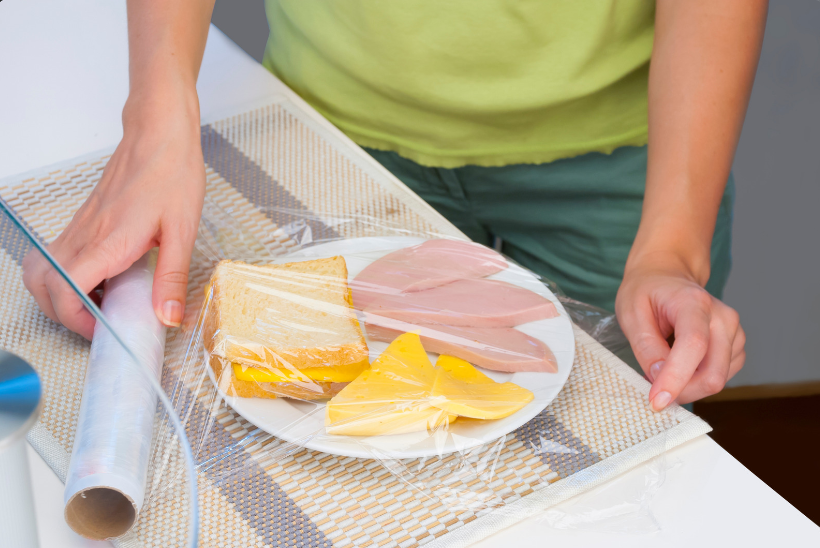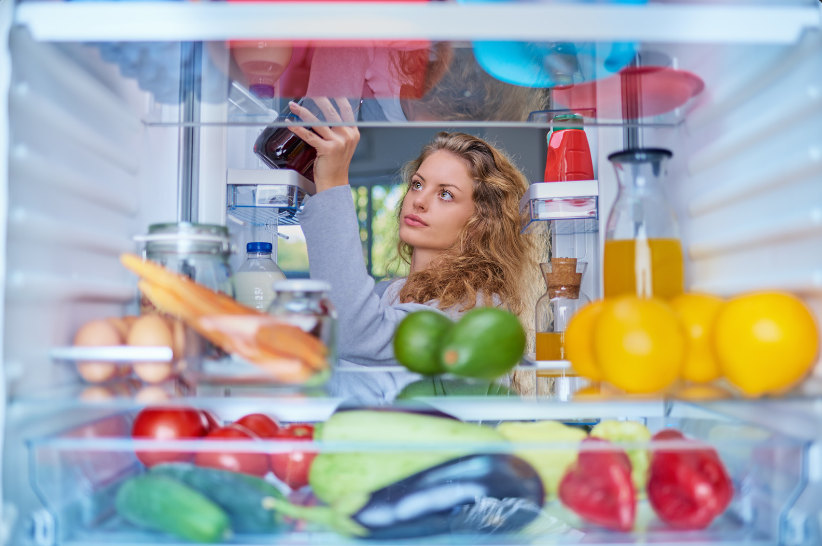How to improve food shelf life? Ensuring the longevity of our food items is crucial.
Whether it’s about reducing waste, saving money, or maintaining a well-stocked pantry, knowing how to improve the shelf life of your food is a valuable skill.
In this article, we will explore various techniques to enhance food shelf life, from proper storage in the fridge to reducing the use of preservatives.
Shelf life means how long you can keep and eat food safely and it will still taste good, as long as you store it the right way and don’t open the package it came in.
Food spoilage is a common issue that many of us face. It can be disheartening to open your fridge and discover that your fresh produce has gone bad, or that the leftovers you were looking forward to have developed an unpleasant odor.
However, with some simple yet effective strategies to increase the shelf life of fruits and vegetables, you can significantly extend the shelf life of your food items.
With valuable knowledge keep your food fresher for longer, which ultimately leads to a healthier, more sustainable lifestyle.
Methods to Improve Shelf Life

Our expert’s best methods to improve shelf life and make your favorite food eatable and fresh all the time include:
1. Proper Storage in the Fridge
How to improve food shelf life in the fridge? One of the easiest ways to enhance the shelf life of your food is to store it correctly in the refrigerator.
Refrigeration slows down the growth of bacteria and molds, preserving the freshness of your items for a more extended period.
Make sure to keep your fridge at the recommended temperature of 35-40°F (1-4°C).
2. Utilize Vacuum Sealing
How to improve food shelf life at home? Vacuum sealing is a fantastic method for extending the shelf life of a wide range of foods, including meat, vegetables, and even leftovers.
Removing air from the packaging creates an environment where bacteria and mold struggle to thrive.
3. Freeze Your Food
How to increase shelf life without preservatives? Freezing is another excellent option for prolonging shelf life.
Many items can be frozen, such as berries, bread, and cooked meals.
However, ensure that you use airtight containers or freezer bags to prevent freezer burn.
4. Reduce Oxygen Exposure
Oxygen is a primary contributor to food spoilage. Consider investing in oxygen absorbers or using airtight containers to minimize oxygen exposure.
This is particularly helpful for items like grains, nuts, and dried fruits.
Why Extending Shelf Life Helps

What are the benefits of having a long shelf life for your foods? Well, first you don’t have to cook every day!
Minimizing Food Waste
Extending the shelf life of your food items helps reduce food waste.
When you throw away spoiled food, you’re not only wasting money but also contributing to environmental issues.
Cost Savings
By preventing food from going bad, you can save a substantial amount of money in the long run. You’ll make fewer trips to the grocery store and get more value out of your purchases.
Causes of Reduced Shelf Life
Factors affecting shelf life of food are Ethylene exposure, temperature changes and extremes, and humidity/moisture.
Temperature Fluctuations
Fluctuations in temperature, such as leaving perishables out of the fridge for too long, can significantly reduce shelf life. Always practice proper temperature control.
Contamination
Cross-contamination can introduce harmful bacteria to your food, drastically reducing its shelf life. Be mindful of food handling and hygiene.
Different Methods of Fresh Produce Shelf Life Extension

Various Approaches to Prolonging the Freshness of Produce
Extending the shelf life of fresh produce involves a diverse range of methods tailored to different fruits and vegetables.
Fortunately, there are several effective solutions available for most types of produce.
The strategies for extending the shelf life encompass:
- Enhanced Packaging and Modified Atmosphere Packaging
- Enhanced Treatment and Handling Protocols
- Cold Chain Vulnerability Assessment
- Humidity Monitoring
- Individualized Item Coverings
- Innovative Smart Stickers
- Utilization of Absorbent Food Trays and Pads
- Introduction of New Produce Varieties
- Implementation of Natural Antimicrobial Agents
- Cultivation of Improved Varieties: a key method to extend the shelf life of fresh produce is the cultivation and utilization of improved and resilient plant varieties.
The Process of Prolonging The Shelf Life Of Food

Prolonging the shelf life of food is essential to ensure that it remains safe to eat and retains its quality for an extended period.
The process involves a combination of methods and techniques that inhibit the growth of microorganisms, slow down chemical reactions, and reduce physical deterioration.
Here’s an overview of the key methods for extending the shelf life of food:
- Refrigeration: Storing perishable foods at temperatures between 32°F to 40°F (0°C to 4°C) can slow down microbial growth and enzymatic activity.
- Freezing: Freezing food at temperatures below 0°F (-18°C) can effectively preserve it for extended periods.
- Vacuum Packaging: Removing air from packaging can prevent oxidation and reduce the growth of aerobic microorganisms. This method is commonly used for meats, cheeses, and some snack foods.
- Canning: Canning involves heating food to destroy bacteria and enzymes and sealing it in airtight containers. This method is suitable for a wide range of foods, including fruits, vegetables, and soups.
- Drying/Dehydrating: Removing moisture from food inhibits the growth of microorganisms. Dried foods, such as fruits, vegetables, and jerky, have a long shelf life.
- Salting: Adding salt to food can inhibit the growth of bacteria and molds. It is often used in the preservation of fish, meats, and some vegetables.
- Smoking: Smoking foods like meat and fish not only imparts flavor but also helps preserve them by reducing moisture content and introducing antimicrobial compounds.
- Fermentation: Fermentation uses beneficial microorganisms to preserve food and develop unique flavors. Examples include sauerkraut, yogurt, and kimchi.
- Preservatives: Chemical preservatives like sodium benzoate and citric acid are added to processed foods to inhibit microbial growth and extend shelf life.
- Packaging: Proper packaging is crucial to prevent moisture, air, and light from reaching the food.
5 Hacks To Increase The Shelf Life Of Fruits And Vegetables
Boosting the Longevity of Fruits and Vegetables with Our 5 Effective Strategies:
- Opt for Fresh Produce Selection
- Avoid Refrigerating Tomatoes
- Enhance Potato Longevity with Apples
- Preserve Lemons by Not Cutting Them in Half
- Prolong Berry Shelf Life with Vinegar and Water Rinse
Bonus Tip: Isolate and Shield Bananas for Extended Freshness
Last Thoughts On How To Improve Food Shelf Life
In conclusion to our full guide on how to improve food shelf life, knowing how to improve food shelf life is essential for both economic and environmental reasons.
By following proper storage techniques, minimizing oxygen exposure, and understanding the factors that reduce shelf life, you can make the most out of your groceries and reduce food waste.
FAQs About How To Improve Food Shelf Life
How can we improve the shelf life of food?
Improving the shelf life of food involves proper storage, minimizing oxygen exposure, and understanding the factors that contribute to food spoilage, among other techniques.
What ingredients increase shelf life?
Ingredients like vinegar, salt, and sugar can be used as natural preservatives to increase the shelf life of certain foods.
How do you increase the shelf life of perishables?
To increase the shelf life of perishables, store them at the right temperature, reduce oxygen exposure, and practice proper food handling and hygiene.
What chemical is usedWhat chemical is used to increase the shelf life of food? to increase the shelf life of food?
Chemical preservatives such as sodium benzoate and potassium sorbate are commonly used to increase the shelf life of processed foods. However, natural alternatives are also available for those looking to avoid chemical additives.

